Technical specifications as listed by HWLabs:
• Two-pass pre-cool/aftercool front-rear dual-core flow configuration with a 30% increase in internal flow rates.
• Custom MaxFin™ 25 micron Copper Splitter Fin Configuration utilizing 45% thinner fin material yielding up to 50% less pressure drop.
• Unique fin configuration eliminates intra-louver accumulation of dust particles for trouble free operation.
• Radically optimized 20 FPI (Fins Per Inch) fin density providing dramatically increased heat transfer surface area.
• Custom low-profile 2-row 19.0 x 1.2mm MaxFlow™ tubes with twice the waterside surface area of the GTS and 60% frontal area reduction for superior low air-resistance aerodynamics and lower internal flow requirements.
• Yields up to 45% more heat exchange capacity than the Black Ice® Xtreme in both Stealth or Performance modes.
• Achieves Black Ice® Xtreme level performance in stealth mode (low-noise/low-airflow conditions).
• M4 Threaded Screw Holes for easier mounting and greater adaptability.
• Now standard G 1/4″ female threaded fittings.
• Full high-temper brass structural construction for weight reduction and superior corrosion resistance.
• High performance compact radiator compatible as an upgrade to the Black Ice® Xtreme and most 120mm form factor radiators.
• Uses 100% Non-corrosive water-solluble fluxing process.
• Fully RoHS compliant.
• Full electrostatic polyurethane painting finish for uniform coating with high temperature curing for increased finish durability.
• Renowned Black Ice® quality.
• Patent Pending Design.
Tech Drawing of the GTX 360.
Dimensions Measured on the Radiator Tested:
The core is made up of 2 rows of 12 tubes arranged in a dual pass front to back configuration which I call “Opti-Flow”. Opti-Flow needs some explanation so we’ll examine that shortly. The fin arrangement is made of split fins with a 20 FPI count. The high fin count should equate to some great high speed fan results, but might struggle with low fan speeds.
The GTX is a dual pass radiator, but not in the tradition sense where the coolant flow path is side to side such as in this reference picture below. This is known as U-Flow because the coolant travels up all the tubes on one side (left in pic) of the rad and then returns down the other side. U-Flow is most easily recognized when the port end has 2 separate tanks:
Instead the GTX flow path is front to back OR back to front depending on which port is used as the inlet. In other words the coolant travels up the tubes the full width of the radiator core then changes direction in the non-port tank and travels down the other set of tubes on the opposite face of the core. To get this flow path to work HWLabs have installed a plate and tube in the port tank ends.
HWLabs recommends that the “hot face” (coolant in) be the first pass and act as a pre-treatment for the second pass, through the “cool face” tubes (coolant out).
I have done a small amount of testing on this myself, and at higher fans speeds the Opti-Flow performed better. As the GTX certainly appears tuned for high fan speeds, that is how I will run the thermal testing – set up for Opti-Flow.
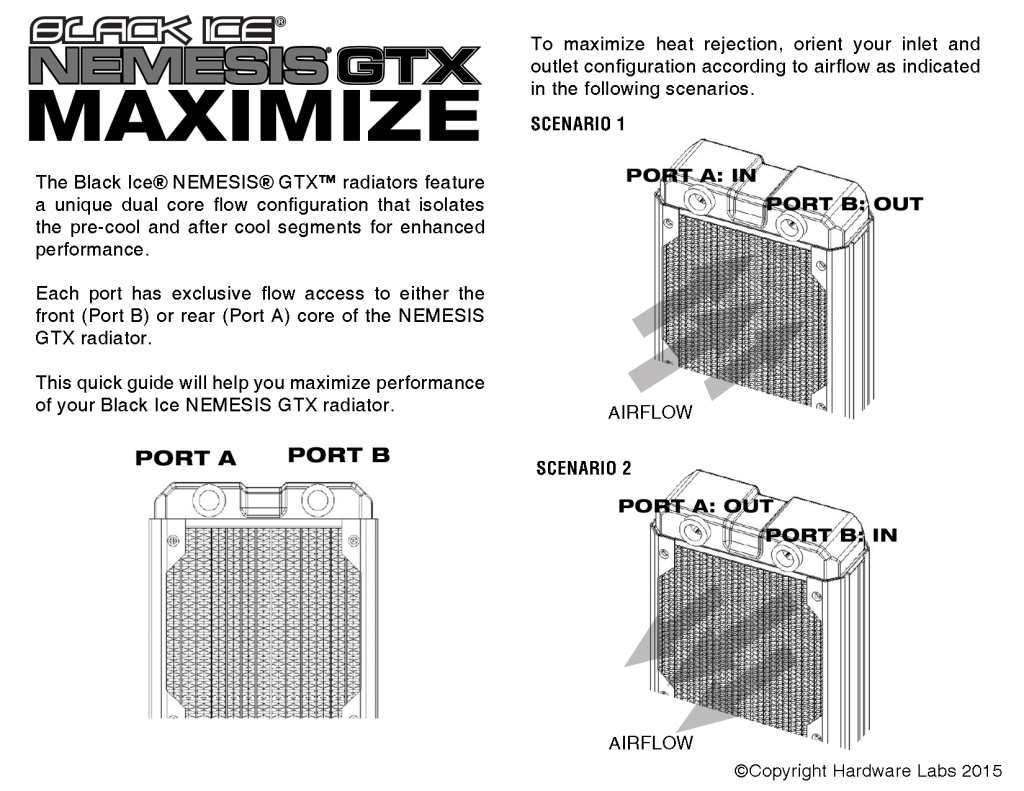 The split fins are not louvered and are spaced at 20 FPI. The fin spacing is quite uneven between the tubes, but this is to be expected considering it is such a high FPI count.
The split fins are not louvered and are spaced at 20 FPI. The fin spacing is quite uneven between the tubes, but this is to be expected considering it is such a high FPI count.
Finish and Features
The GTX has a true Gloss Black finish and while not my preferred finish for a radiator it does look stunning. Even after years of service (and abuse) this sample still looks great.
HWLabs is renowned for producing quality radiators that have long been considered as the industry standard. The GTX is one of the rads that helped build this reputation. The GTX feels solid and weighty. This GTX being tested has even been dropped (accidentally) and though dented, remains functional.
The fan mount spacing is the standard 15mm.
None of the mounting holes are located directly above tubes; however they are very, very close and no protection plates are fitted. Care must be taken to ensure the correct length screws are used to suit your mounting needs.
The GTX comes equipped with just 2 ports in total, 1 inlet and 1 outlet to choose from. Depending on installation orientation and fan assembly the inlet/outlet port might be different to achieve Opti-Flow .
While we love multi-port rads, we understand that they are difficult (though possible) to incorporate into front to back (Opti-Flow) rads.
Unfortunately this also means there is no dedicated fill/bleeder port on the return end tank.
So we have somewhat of a mixed bag of features with the Black Ice GTX 360
It has a thick core with a high FPI count that appears tuned toward high speed fans. The gloss black finish is excellent as is the overall build quality but it is lacking in features.
Let’s see how it performs…








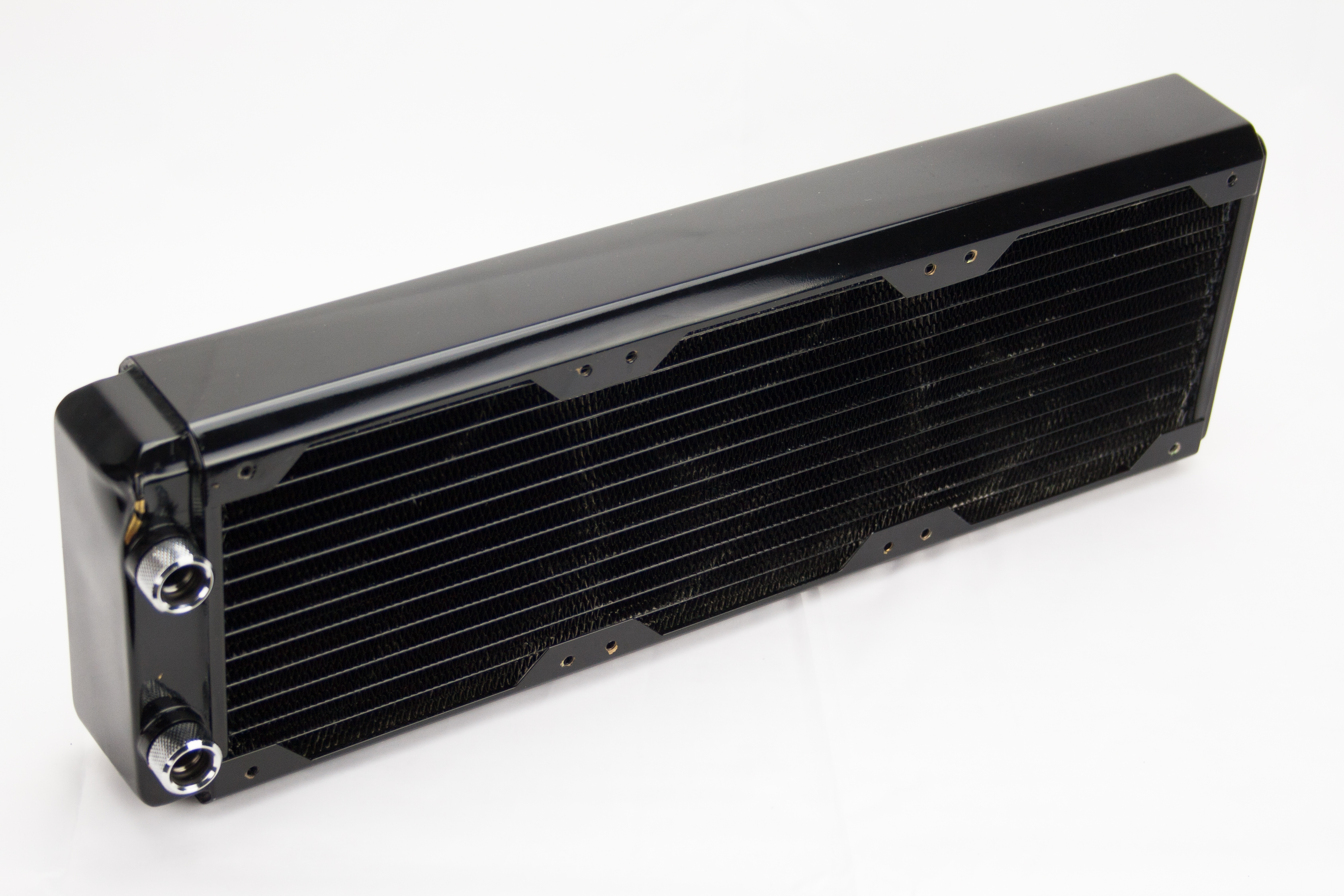
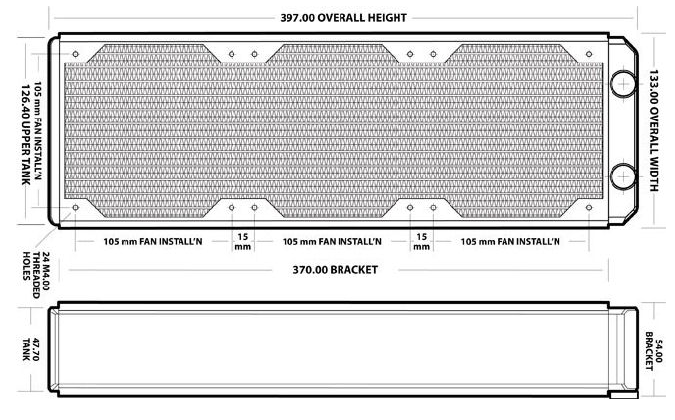


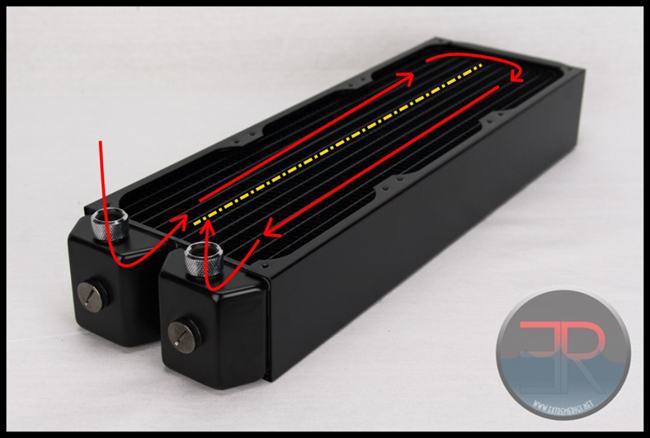
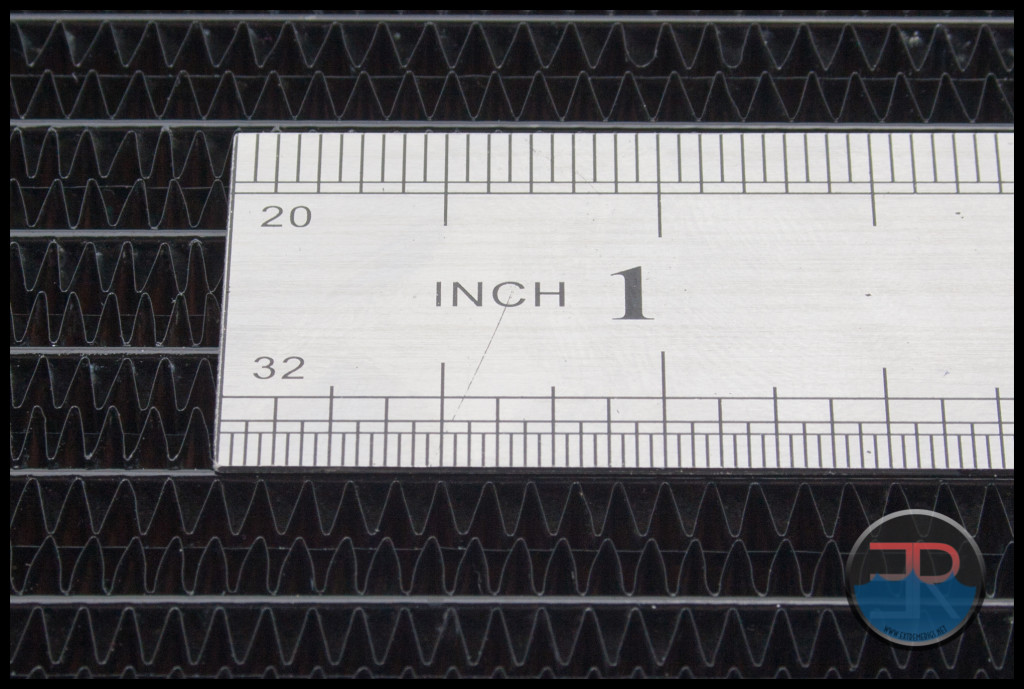
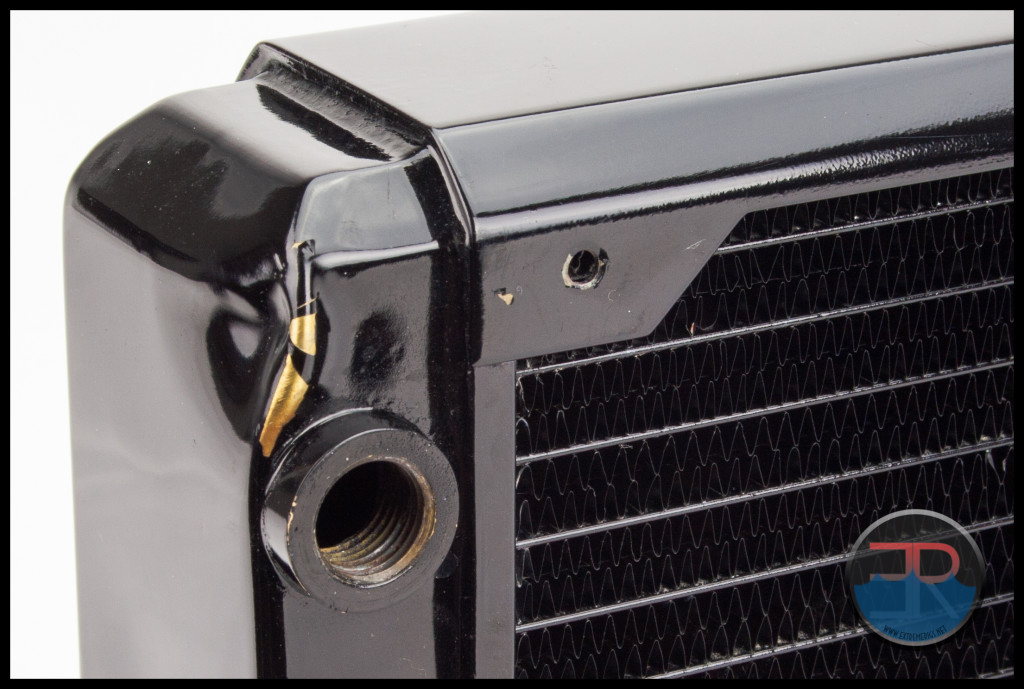
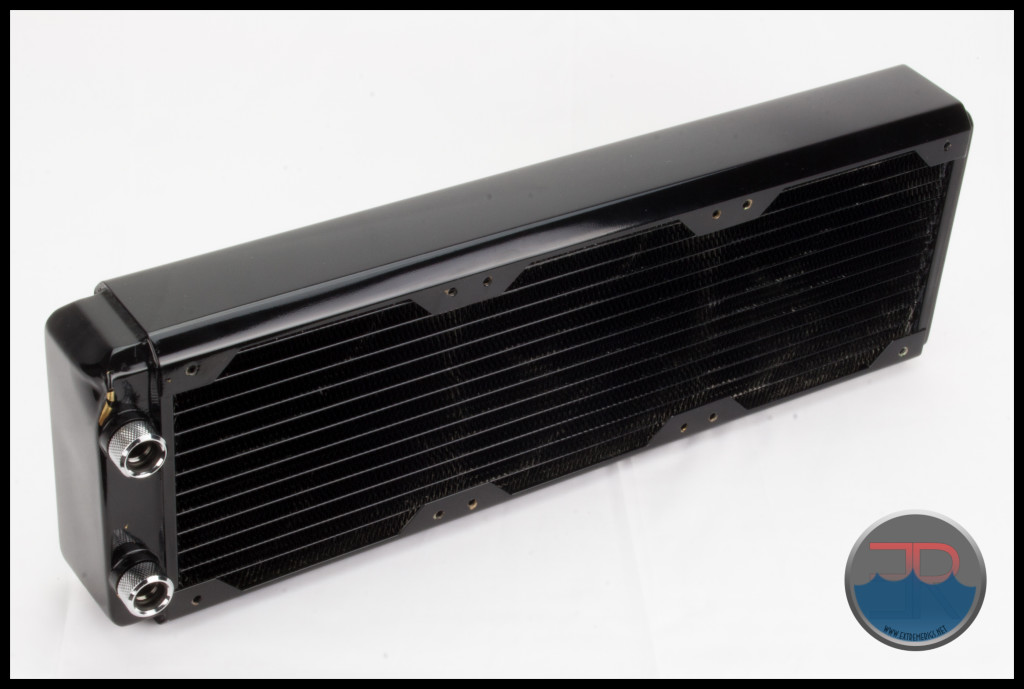
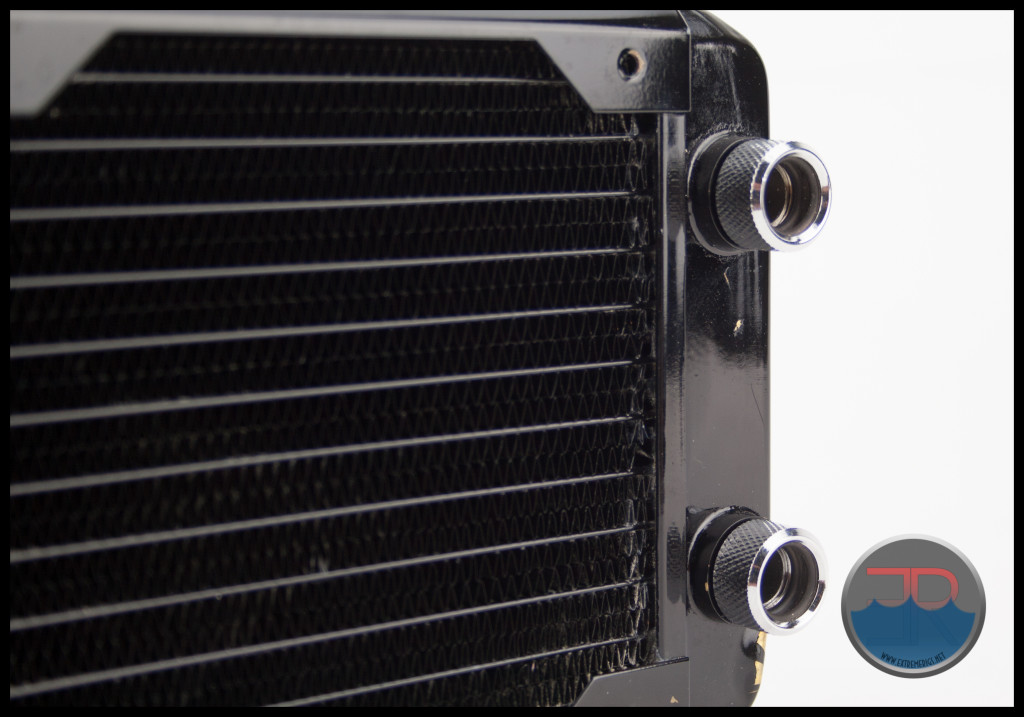
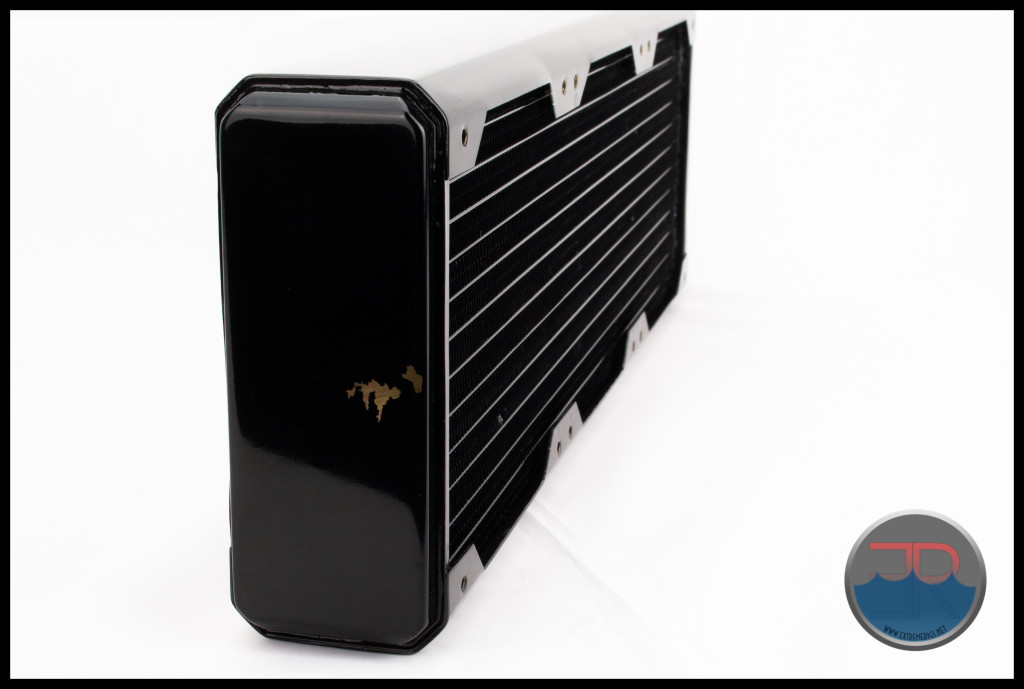



[…] Hardware Labs Black Ice® GTX 360mm Radiator Review […]
Thanks for the review again.
I think that the issue of screw protectors again, seems to be a design flaw. This is a bigger problem with the GTX 360 than other radiators simply because it is a radiator designed for high rpm fans. By nature, you are far more likely to use 38mm fans with such a radiator in push pull for the added static pressure.
Otherwise, it’s a solid radiator.
I would love to see a “Monster” radiator with 20 fpi and a similar design, but I suspect it would be a niche product.
Keep in mind that the GTX is an older model and that what we now consider important features were not always incorporated a few years ago. The current generation of HWLabs offerings all feature protection plates.
If I am not mistaken though the Black Ice GTX Gen 2 though (the variant for high rpm fans in push pull) still does not have screw protectors.
The HW Labs site is currently down so I cannot look it up.
Hi, which fans can use with this radiator?
Any 120mm fans would work – but if you’re buying this rad we would assume it’s to make use of it’s higher performance with highspeed fans. So something in the 2000+RPM is probably the target.
this rad i already have it, can you suggest me 6 fan with low noise?
Thanks in advance
There is a definite intangible when it comes to fan noise. That intangible is the “ear of the beholder.” The quality of sound may not be the same to one listener as to another. This becomes more true when you start moving up to higher speed fans. Another thing to think about, if a fan is tested to emit 29 decibels of sound at 1500 RPM and you need 6 of these fans, each fan adds to the overall noise total. It is not linear, so not 29 dba * 6, it is more of a percentage. Throwing a number out there for sake of example, 6 fans together may emit a constant 38 dba at 1500 RPM. Mounting the fans can cause the noise quality to change. To answer your question with F_F target RPM (not in a specific order): Dark Side Gentle Typhoon 2150 RPM, Noctua NF-F12 Industrial 2000/3000 RPM, Noiseblocker NBe-Loop B12-P / B12-3 & B12-4, EK Vardar F4-120/120ER & FF5-120. A starting place at least.
Comments are closed.